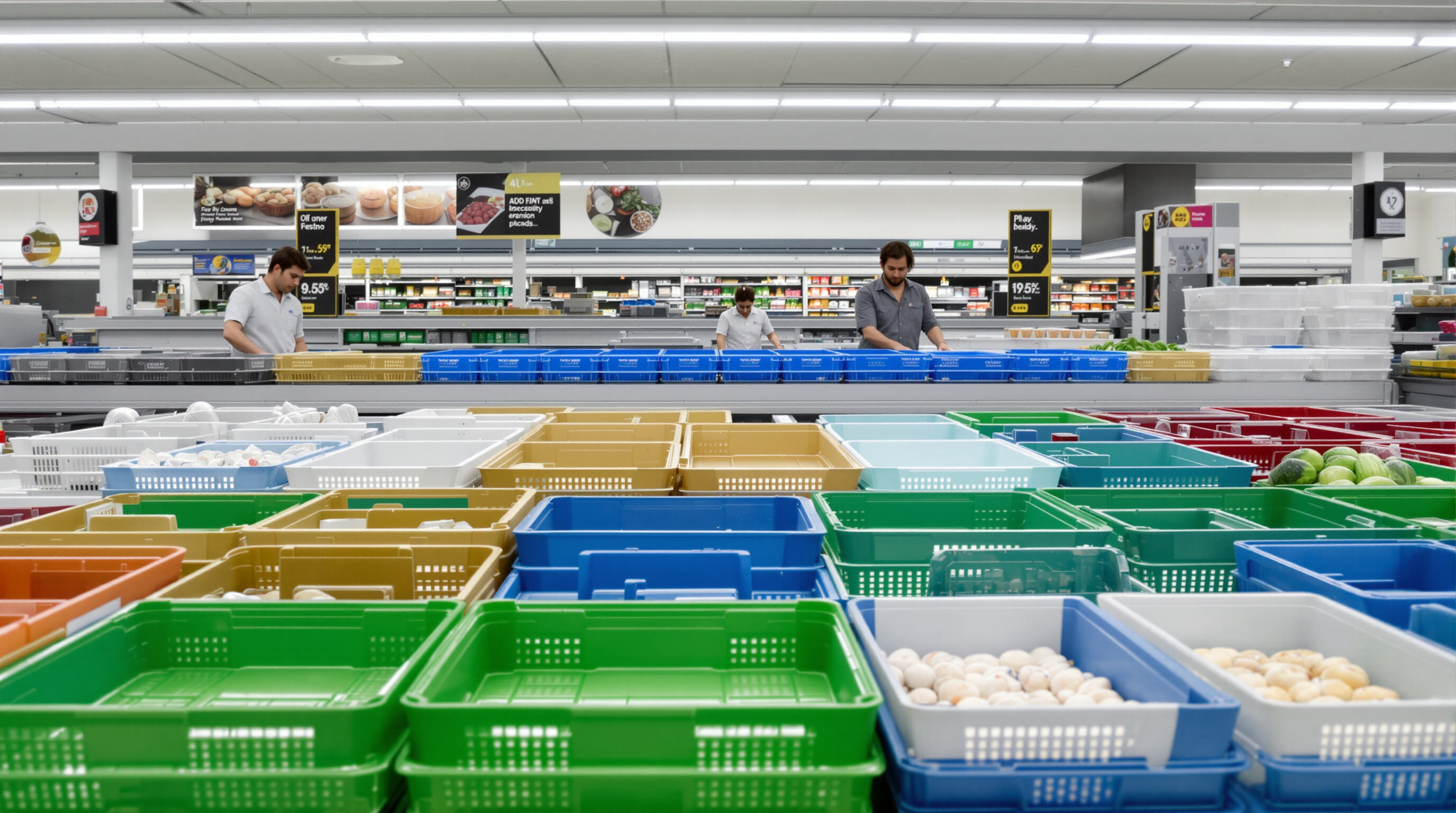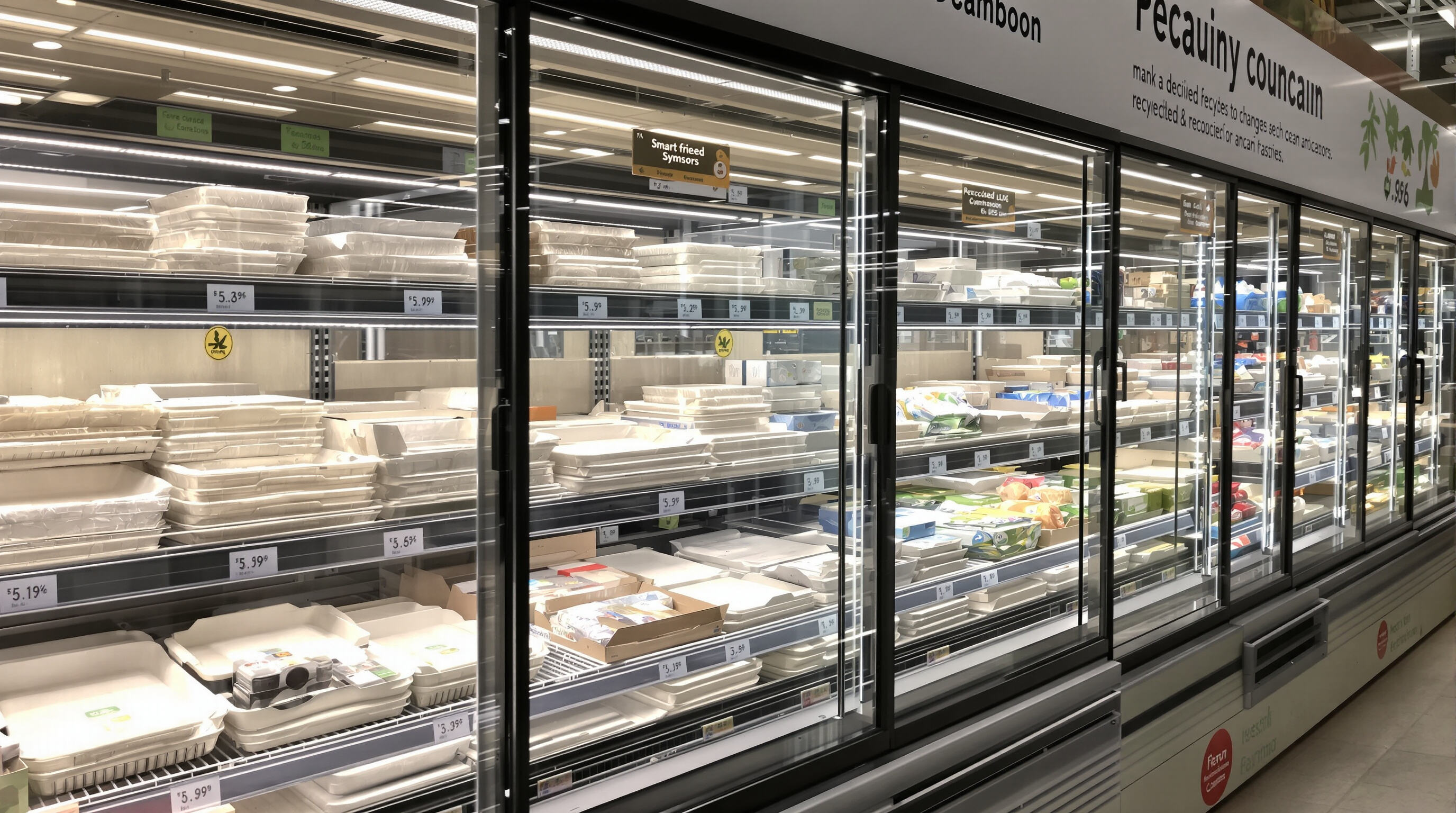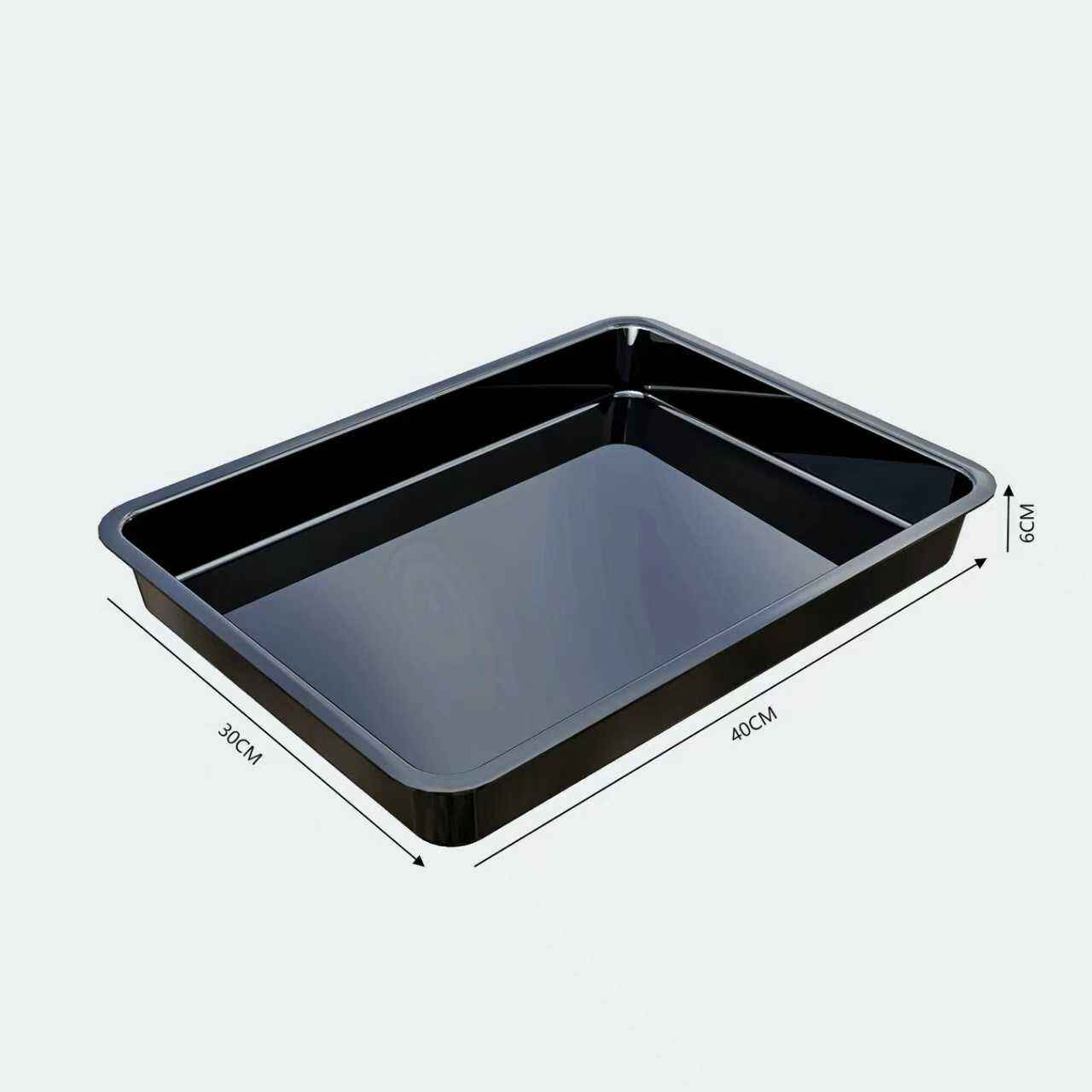Optimize Refrigerator Tray Layout for Maximum Visual Clarity

Modular and Adaptable Display Systems for Flexible Product Arrangement
Supermarkets today are getting smart with their fridge setups by installing these modular tray systems. The cool thing about them is they let stores tweak everything on the fly depending on what's selling and when. Staff can literally rearrange sections within minutes. Think about it: extra room for those fruit platters in the heat of summer while cutting back space for whatever nobody wants to buy. This kind of flexibility means stores stay fresh with their displays without losing much time getting things set up right. Some places have reported being able to adjust their whole layout overnight just before peak shopping hours.
Strategic Spacing to Prevent Overcrowding and Enhance Product Visibility
Maintaining 15–20% empty space between items reduces visual clutter while preserving airflow for temperature consistency. A 2023 Consumer Behavior Study found that shelves with intentional spacing saw 22% longer customer engagement compared to densely packed displays. This approach also minimizes accidental product displacement during restocking, improving both aesthetics and operational efficiency.
Use of Color-Coded Refrigerator Trays to Categorize Products and Improve Visual Flow
Color-coded trays create intuitive navigation—blue for dairy, green for plant-based items, and white for ready-to-eat meals. This system aligns with ergonomic design principles in food retail, helping shoppers locate items 40% faster according to display optimization trials. The visual consistency also reinforces brand professionalism and supports dietary-specific shopping paths.
Data Insight: 68% of Shoppers Notice Organized Trays First in Refrigerated Sections
Thermal mapping research reveals that customers' eyes naturally gravitate toward symmetrical, grid-aligned tray layouts in cold sections. Stores using structured arrangements report 31% fewer customer assistance requests, as logical product grouping reduces decision fatigue. These findings highlight the direct link between organized displays and improved shopper autonomy.
Enhanced Lighting to Showcase Refrigerated Products and Maintain Freshness
LED Lighting for Fresh Goods Preservation and Aesthetic Enhancement
Modern LED systems extend shelf life by generating minimal heat, protecting perishables while reducing energy costs by up to 40% compared to traditional lighting. Directional LED beams combined with ambient illumination enhance visual appeal, drawing attention to premium or promotional items without compromising temperature stability.
Ideal Color Temperature (3000K–4000K) for Natural Food Presentation
Lights in the 3000K to 4000K range actually do a pretty good job at replicating natural daylight conditions, which helps keep meat, dairy products, and fresh produce looking their best. Take salmon fillets for instance they really pop under around 3500K lighting, giving them that fresh catch look customers want when shopping. The good thing about this temperature range is it doesn't have that annoying blue tint which tends to make leafy vegetables look washed out or dull. Supermarkets especially benefit from this because shoppers can see exactly what they're getting without any optical tricks messing with their perception of freshness.
Balancing Color Spectrum and Light Distribution to Reduce Glare and Shadow
Horizontal LED strips paired with vertical spotlights reduce shadowed areas by 62% in chilled sections, according to a 2023 retail design study. Low-glare fixtures minimize reflections on plastic packaging, while adjustable track lighting adapts to seasonal or promotional displays, maintaining consistent visibility across rotating inventory.
By integrating these lighting strategies, retailers create visually appealing cold zones that highlight product freshness and streamline shopper navigation.
Apply Visual Merchandising Strategies to Engage Shoppers in Cold Zones
Visual Storytelling in Product Placement to Guide Shopper Decisions
Grocery stores are getting creative with how they arrange fridge trays these days. Think about those fancy yogurt displays stacked in layers with little recipe cards showing off breakfast parfait ideas right beside the granola bins. These setups really grab attention and make browsing through the cold section feel like something special. Stores also place ready-to-eat meals next to ingredients that go well together at eye level, which gets people grabbing things on a whim. According to some recent research from the Food Marketing Institute back in 2023, around two thirds of shoppers actually look for sections that look put together nicely when picking out chilled products. Makes sense too since nobody wants to rummage through chaos when hungry.
Tiered Shelving and Focal Points to Maximize Product Visibility and Appeal
Angled shelves in beverage coolers showcase craft sodas and premium juices, while risers in hummus displays add depth and visibility for emerging brands. Placing rotating features—like artisanal cheese selections—at aisle intersections captures attention and encourages exploration, breaking routine shopping patterns.
Case Study: Major Grocery Chain’s Chilled Section Redesign Increased Dwell Time by 27%
A national supermarket group redesigned its prepared foods section using three principles:
- Installed glass-front refrigerator trays with portion-sized meal kits
- Added digital menu boards above sushi displays showing allergen filters
- Introduced weekly "chef's pick" signage with QR codes linking to recipes
This strategy extended average visit duration by 4.2 minutes and lifted cold-prepared meal sales by 19% in Q1 2023 versus the prior year.
Integrate Energy-Efficient and Sustainable Refrigerator Display Solutions

Supermarkets today are really pushing for refrigerated displays that combine energy savings with green practices, trying to meet what customers want while also cutting down on running expenses. Studies show something interesting too – around two thirds of people shopping nowadays actually look for stores that can prove they're doing things right environmentally speaking. That makes going green with cooling systems not just good for the planet but also smart business strategy according to recent market research from Globenewswire back in 2025. Retailers who invest in new tech like better insulation materials or smarter temperature controls find themselves saving money month after month while still showing they care about sustainability issues facing our communities.
Energy-efficient LED lighting and smart sensors to reduce operational costs
Replacing traditional lighting with LEDs cuts energy consumption by up to 40%. When paired with smart sensors, these systems optimize cooling and lighting based on real-time foot traffic and temperature data. Adaptive lighting dims during low-activity periods, reducing waste without sacrificing product visibility.
Sustainable refrigerator tray materials that support eco-friendly branding
Trays made from recycled ocean plastics or bamboo composites offer durability while aligning with sustainability narratives. Their distinct texture and appearance communicate a brand’s eco-conscious values, differentiating them from conventional plastic trays and resonating with environmentally aware shoppers.
Minimalist design principles to reduce visual clutter and improve neatness
Streamlined tray layouts with uniform shapes and neutral tones create a clean visual hierarchy. Slimmer dividers maximize product space and eliminate debris-trapping edges, simplifying restocking and cleaning. This minimalist approach enhances both aesthetic appeal and operational efficiency.
Trend: Smart lighting systems that adapt to foot traffic and peak hours
IoT-enabled lighting adjusts brightness based on shopper density and time of day. Brighter illumination during peak hours highlights promotions, while reduced output off-peak conserves energy. This innovation lowers annual lighting costs by up to 30% and extends LED lifespan by 20%, delivering long-term savings and sustainability.
FAQ
Why do supermarkets use modular tray systems?
Supermarkets use modular tray systems to allow for flexible and adaptable product displays, which can be quickly adjusted based on customer demand and seasonal variations.
How does empty spacing in refrigerator trays benefit visual merchandising?
Maintaining empty space between products reduces visual clutter, enhances airflow for consistent temperature, and increases customer engagement, leading to better aesthetics and operational efficiency.
What is the significance of LED lighting in refrigerated displays?
LED lighting preserves the freshness of products by minimizing heat generation and reduces energy costs. It also enhances the visual appeal of products while maintaining temperature stability.
How do supermarkets incorporate sustainability into their refrigerated displays?
Supermarkets incorporate sustainability by using energy-efficient LED lighting, smart sensors, and eco-friendly materials like recycled ocean plastics or bamboo composites for trays. These practices reflect their commitment to environmental responsibility.
Table of Contents
-
Optimize Refrigerator Tray Layout for Maximum Visual Clarity
- Modular and Adaptable Display Systems for Flexible Product Arrangement
- Strategic Spacing to Prevent Overcrowding and Enhance Product Visibility
- Use of Color-Coded Refrigerator Trays to Categorize Products and Improve Visual Flow
- Data Insight: 68% of Shoppers Notice Organized Trays First in Refrigerated Sections
- Enhanced Lighting to Showcase Refrigerated Products and Maintain Freshness
- Apply Visual Merchandising Strategies to Engage Shoppers in Cold Zones
- Integrate Energy-Efficient and Sustainable Refrigerator Display Solutions
- FAQ

